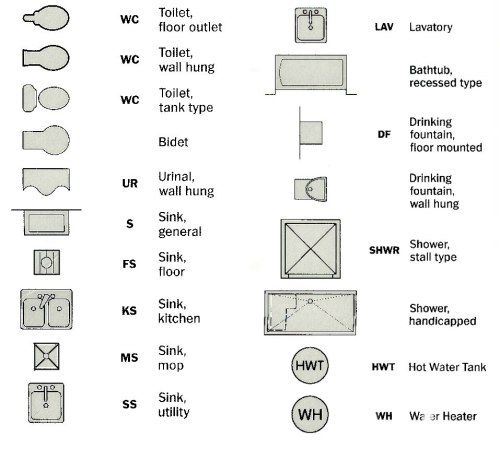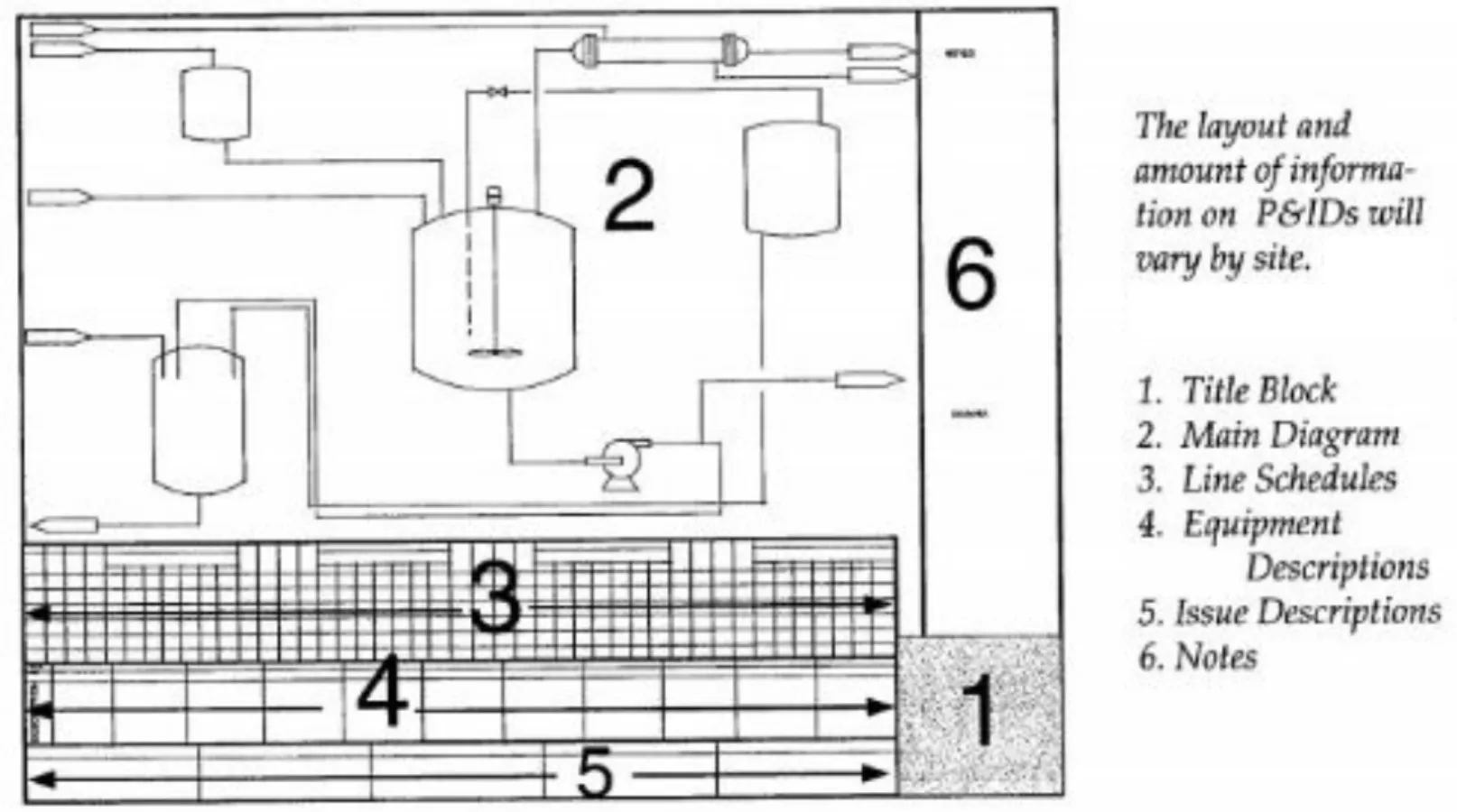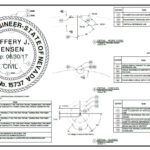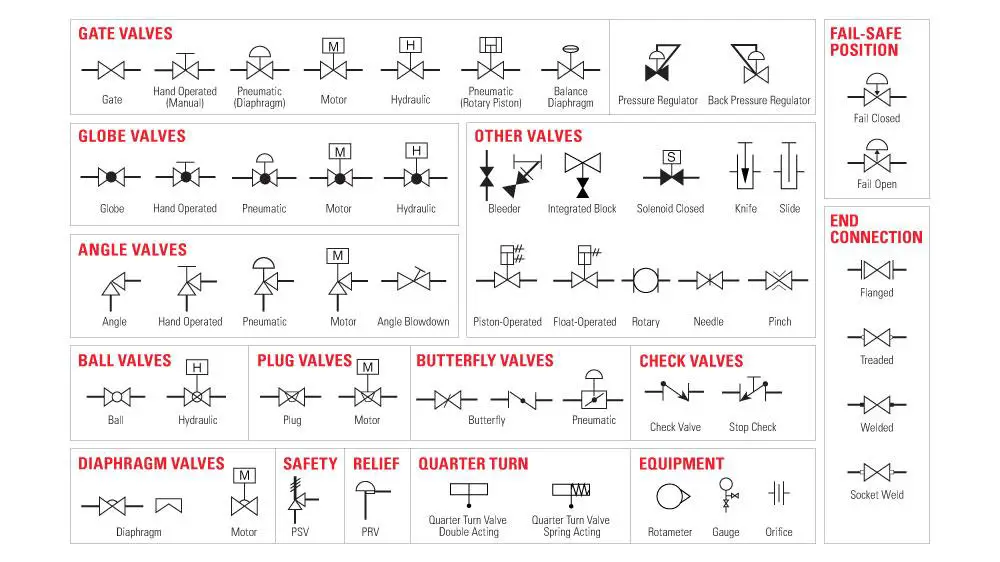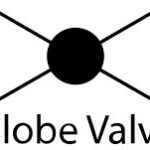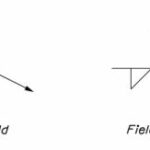What are the Piping Symbols?
Piping symbols, also known as pipe drawings, are a set of symbols used in metal fabrication drawings to represent the various types of pipes and fittings used in industrial piping systems. These symbols are used to indicate the type of connection, the direction of flow, and the size of the pipe. Understanding these symbols is crucial for anyone working in the field of metal fabrication and welding.
Basic Components of a Piping System
The basic components of a piping system include pipes, fittings, valves, and other equipment. Piping symbols are used to represent each of these components in a drawing. The symbols are usually shown in black lines, while lighter lines indicate the connected pipes that are not part of the symbols.

Pipe symbols are a reflection of what the part would look like in theory. For example, if a 90-degree elbow is to be placed in service, the drawing will reflect a 90-degree angle. There may be multiple symbols for one fitting or part depending on the fashion it is to be installed, such as butt weld, socket weld, or threaded.
Piping Symbols
There are a variety of piping symbols used in metal fabrication drawings, including:
- Straight Pipe: This symbol represents a section of pipe that is straight and does not have any bends or curves.
- Elbow: This symbol represents a curved section of pipe used to change the direction of the flow.
- Tee: This symbol represents a T-shaped fitting used to connect three pipes together.
- Cross: This symbol represents a four-way pipe fitting used to connect four pipes together.
- Reducer: This symbol represents a fitting used to connect pipes of different sizes together.
- Valve: This symbol represents a device used to control the flow of fluid or gas in a piping system.
- Flange: This symbol represents a flat, circular fitting used to connect two pipes together.
- Union: This symbol represents a fitting used to connect two pipes together that can be easily disconnected for maintenance.
It is important to note that these symbols can be combined to create more complex piping systems. For example, a piping system may include a combination of straight pipes, elbows, tees, reducers, valves, and flanges to create a functional system.
Piping Symbols for Fittings
In piping systems, fittings are used to connect pipes of different sizes or change the direction of the flow. There are several types of fittings that are commonly used, each with its own unique characteristics.

Here are some of the common piping symbols for fittings:
- Elbow: An elbow is a fitting that changes the direction of the flow. Common types of elbows include 45-degree elbow, 90-degree elbow, and 180-degree elbow. The piping symbol for a 90-degree elbow is a short arc with a dot at the end, while a 45-degree elbow is represented by a longer arc with a dot at the end.
- Tee: A tee is a fitting that is used to connect three pipes together at a 90-degree angle. The piping symbol for a tee is a straight line with a small line perpendicular to it at the top.
- Reducer: A reducer is a fitting that is used to connect pipes of different sizes. The piping symbol for a reducer is a cone-shaped object with its smaller end connected to a line representing the smaller pipe and its larger end connected to a line representing the larger pipe.
- Cap: A cap is a fitting that is used to close the end of a pipe. The piping symbol for a cap is a circle with a short straight line at the top.
These symbols are commonly used in piping and instrumentation diagrams (P&ID) to represent the different types of fittings used in a piping system. It is important to understand these symbols to effectively interpret and design piping systems.
Piping Symbols for Flanges
Flanges are used in piping systems to connect pipes, valves, and other equipment. They are designed to provide a secure and leak-proof connection between two components. Here are some common piping symbols for flanges:

- Weld Neck Flange: A weld neck flange is a type of flange that is welded to the pipe. The piping symbol for a weld neck flange is a circle with a straight line extending from it at a right angle.
- Slip-On Flange: A slip-on flange is a type of flange that is slipped over the end of the pipe and then welded in place. The piping symbol for a slip-on flange is a circle with a short straight line extending from it at a right angle.
- Blind Flange: A blind flange is a type of flange that is used to close the end of a pipe or valve. The piping symbol for a blind flange is a circle with a diagonal line through it.
- Threaded Flange: A threaded flange is a type of flange that has internal threads that are used to connect to a threaded pipe or fitting. The piping symbol for a threaded flange is a circle with a series of diagonal lines inside it.
These piping symbols for flanges are commonly used in piping and instrumentation diagrams (P&ID) to represent the different types of flanges used in a piping system. It is important to understand these symbols to effectively interpret and design piping systems.
Reference: Types of Flanges.
Piping Symbols for Valves
Valves are used in piping systems to control the flow of fluids or gases. There are many different types of valves, each with its own unique function. Here are some common piping symbols for valves:
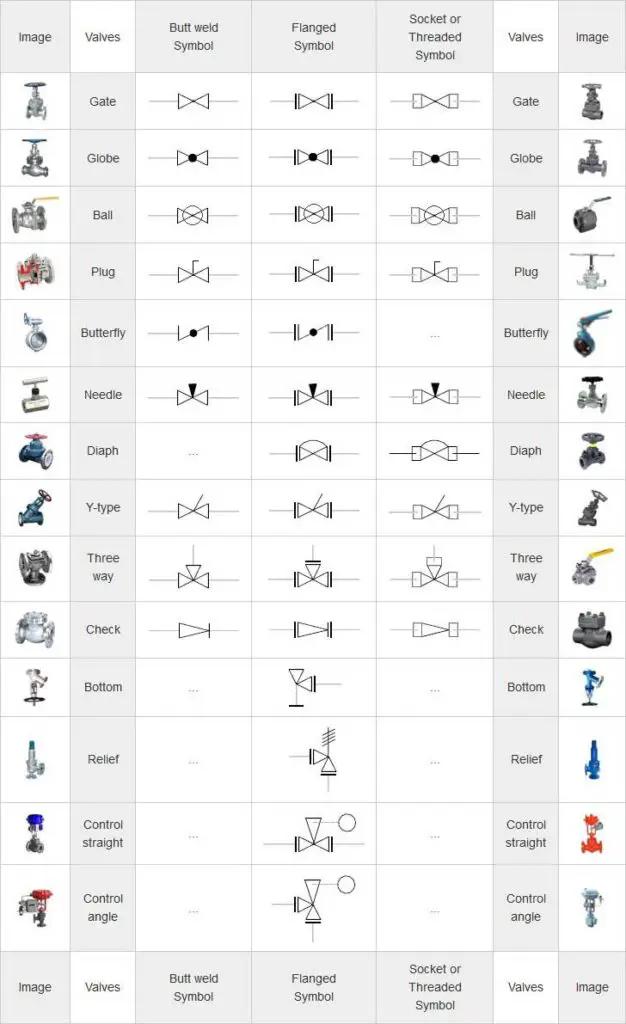
- Gate Valve: A gate valve is a type of valve that is used to stop or start the flow of fluid. The piping symbol for a gate valve is a rectangle with a diagonal line through it.
- Globe Valve: A globe valve is a type of valve that is used to regulate the flow of fluid. The piping symbol for a globe valve is a circle with a diagonal line through it and a small line perpendicular to it at the top.
- Ball Valve: A ball valve is a type of valve that uses a ball-shaped disk to control the flow of fluid. The piping symbol for a ball valve is a circle with a small circle inside it.
- Check Valve: A check valve is a type of valve that only allows fluid to flow in one direction. The piping symbol for a check valve is a circle with an arrow pointing in the direction of flow.
- Butterfly Valve: A butterfly valve is a type of valve that uses a disk-shaped element to control the flow of fluid. The piping symbol for a butterfly valve is a circle with a cross inside it.
These symbols are commonly used in piping and instrumentation diagrams (P&ID) to represent the different types of valves used in a piping system.
Miscellaneous Piping Symbols
Here are some additional piping symbols for miscellaneous components:

- Weldolet: A weldolet is a type of fitting that is used to connect a branch pipe to a main pipe. The piping symbol for a weldolet is a circle with a diagonal line through it and a short line extending from it at a 45-degree angle.
- Blind: A blind is a type of flange that is used to close the end of a pipe or valve. The piping symbol for a blind is a circle with a diagonal line through it.
- Spacer: A spacer is a type of fitting that is used to maintain a specific distance between two pipes. The piping symbol for a spacer is a rectangle with two diagonal lines through it.
- Orifice: An orifice is a type of fitting that is used to restrict the flow of fluid. The piping symbol for an orifice is a circle with a diagonal line through it and a small circle in the center.
- Field Weld: A field weld is a type of welding that is done on site, rather than in a fabrication shop. The piping symbol for a field weld is a small circle with a dot in the center.
- Strainer: A strainer is a type of fitting that is used to remove solid particles from a fluid. The piping symbol for a strainer is a circle with a diagonal line through it and a small circle at the bottom.
- Pipe Bend: A pipe bend is a type of fitting that is used to change the direction of a pipe. The piping symbol for a pipe bend is a curved line with arrows indicating the direction of the bend.
These symbols are commonly used in piping and instrumentation diagrams (P&ID) to represent the different types of components used in a piping system.
Interpreting Piping Drawings
While pipe drawings and specific weld symbols differ, they share a similar relationship between the part and its symbol. Although some people may not encounter these symbols in their profession, it is crucial to have knowledge of them.
Here are some additional details:
- Similar to weld symbols, pipe symbols represent how a part would appear in theory. For instance, if a 90-degree elbow is to be used, the drawing will reflect a 90-degree angle.
- There may be various symbols for a single fitting or part, depending on the installation method (Butt weld, Socket Weld, Threaded).
- Understanding pipe symbols is vital for professionals in fields such as plumbing, engineering, and construction.
- Pipe symbols are used to convey important information about the size, shape, and orientation of the part, as well as the installation method.
- Learning to read pipe symbols can enhance communication between team members and prevent costly errors during the installation process.
Conlusion
In conclusion, piping symbols are an essential part of metal fabrication drawings for piping systems. They help to communicate the design of a piping system and ensure that all components are properly connected. By understanding these symbols, metal fabricators can create accurate and functional piping systems that meet the needs of their customers.
